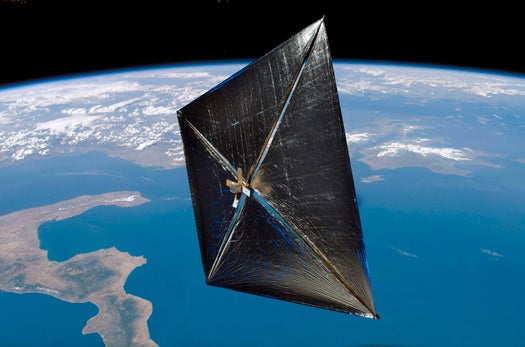NASA Launches a Nanosatellite from a Microsatellite for the First Time
In the wee hours of the morning today something very small did something very big very high above the Earth....

In the wee hours of the morning today something very small did something very big very high above the Earth. NanoSail-D, a demonstration nanosatellite launched aboard the Fast, Affordable, Science and Technology Satellite (FASTSAT) last month, ejected from the mothership, marking the first time a small cubesat has been deployed from a larger autonomous microsatellite in space.
All of those qualifying nano- and micro- descriptors may obscure the real achievement here, so let’s look at it another way: NASA launched an autonomous satellite, and that satellite has successfully deployed a second, smaller satellite. That’s big news for FASTSAT, which was designed to be a small, cost-effective, and independent means to launch small commercial and scientific satellites without having to piggyback on larger, expensive NASA missions.
Of course, the technology proving doesn’t stop with NanoSail-D’s launch into orbit. A three-day timer is now ticking down within the nanosatellite; when it reaches zero, Nanosail-D will unfurl a solar sail boom that should deploy an entire 100-square-foot thin polymer solar sail in just five seconds. If that goes well, NanoSail-D will stay in low-Earth orbit for another 70 to 120 days, cruising on sunshine.
Compact solar sails could be used to degrade satellites orbits at the ends of their lives, thus extending the length of their service by not requiring them to use the last of their propellants to de-orbit. NanoSail-D also aims to prove one other key capability: to eject from FASTSAT successfully without coming back into contact with it sometime later. We should know fairly soon if that part of the mission is also successful. If so, NASA will have demonstrated its first nanosatellite-launching microsatellite, which could change the way institutions and businesses get small payloads into space.